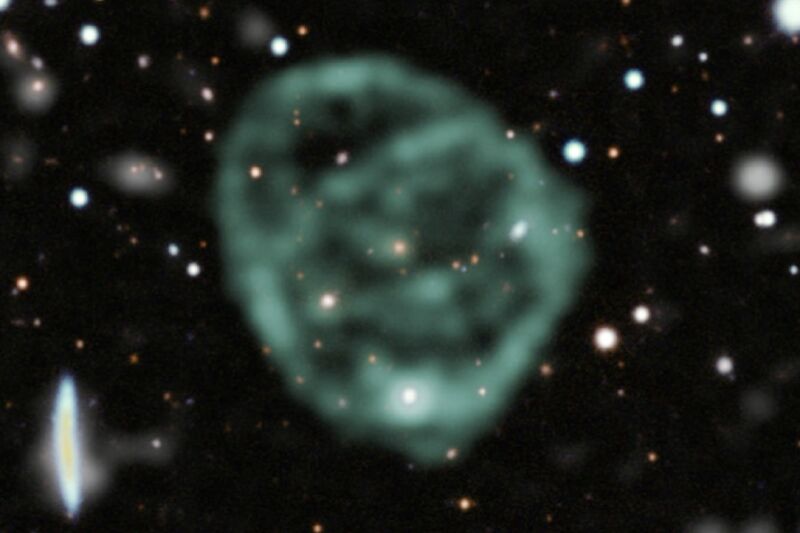
Enlarge / Odd radio circles are large enough to contain galaxies in their centers and reach hundreds of thousands of light years across. (credit: Jayanne English / University of Manitoba)
The discovery of so-called "odd radio circles" several years ago had astronomers scrambling to find an explanation for these enormous regions of radio waves so far-reaching that they have galaxies at their centers. Scientists at the University of California, San Diego, think they have found the answer: outflowing galactic winds from exploding stars in so-called "starburst" galaxies. They described their findings in a new paper published in the journal Nature.
“These galaxies are really interesting,” said Alison Coil of the University of California, San Diego. “They occur when two big galaxies collide. The merger pushes all the gas into a very small region, which causes an intense burst of star formation. Massive stars burn out quickly, and when they die, they expel their gas as outflowing winds.”
As reported previously, the discovery arose from the Evolutionary Map of the Universe (EMU) project, which aims to take a census of radio sources in the sky. Several years ago, Ray Norris, an astronomer at Western Sydney University and CSIRO in Australia, predicted the EMU project would make unexpected discoveries. He dubbed them "WTFs." Anna Kapinska, an astronomer at the National Radio Astronomy Observatory (NRAO) was browsing through radio astronomy data collected by CSIRO's Australian Square Kilometer Array Pathfinder (ASKAP) telescope when she noticed several strange shapes that didn't seem to resemble any known type of object. Following Norris' nomenclature, she labeled them as possible WTFs. One of those was a picture of a ghostly circle of radio emission, "hanging out in space like a cosmic smoke ring."
Read 7 remaining paragraphs | Comments
Ars Technica - All contentContinue reading/original-link]




